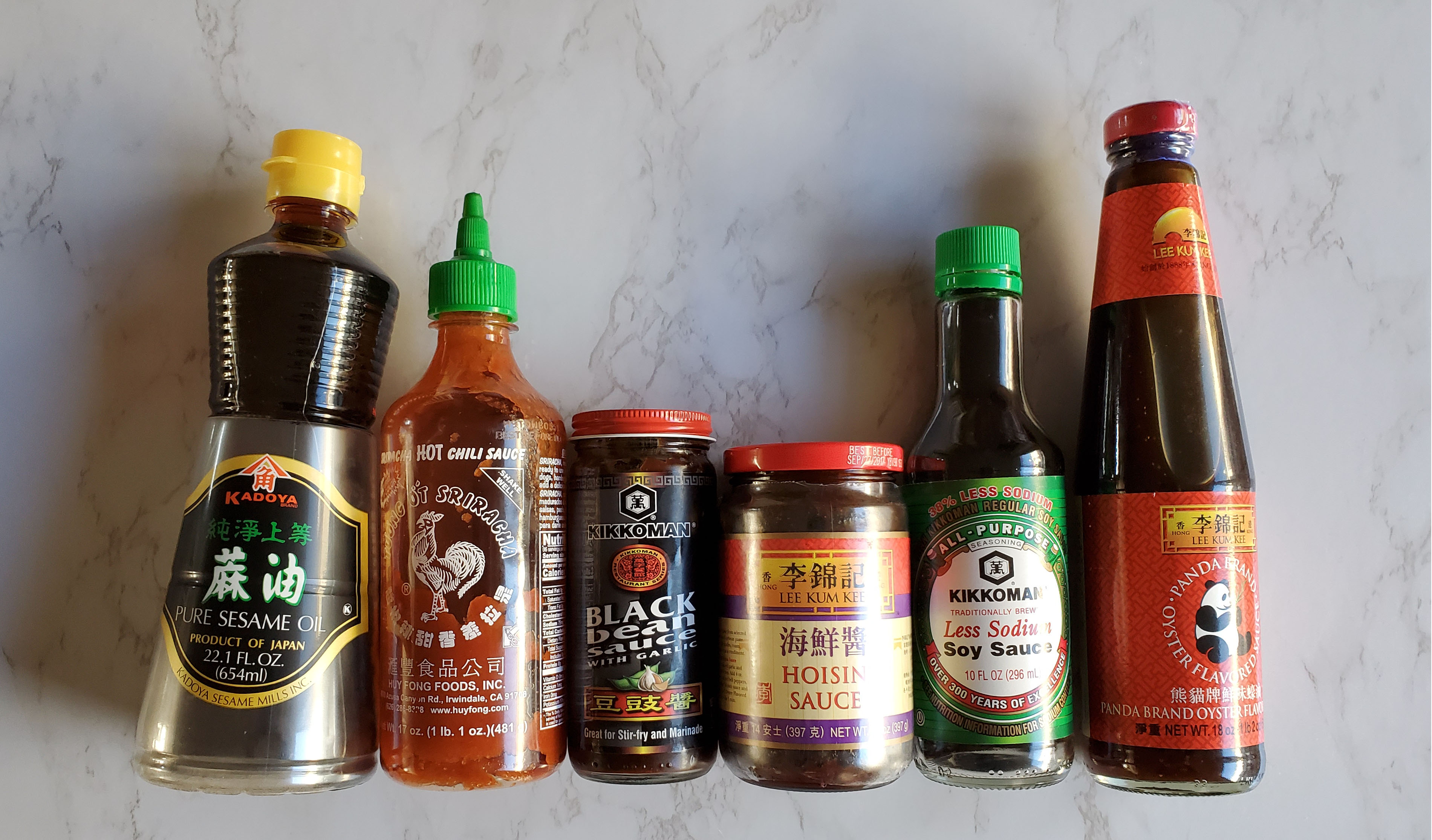
This post has been a long time coming for me. I love cooking Asian food, but I didn't always realize that most people don't even know where to begin when it comes to Asian cooking. I believe it starts in your pantry. I have an emotional attachment to my Asian pantry items. For me, even if I don’t have a ton of ingredients in my fridge, I can still make a super tasty meal, as long as I have my pantry stocked with all of my favorite products. I want to preface this post by saying that I am in no way affiliated with or sponsored by any of the brands that I mention. These are all products that I use daily or extremely frequently. Many of these products are also family favorites that I grew up with. Obviously, you can pick and choose what piques your interest on this list. However, as you’ll see in some of my upcoming posts, many of my recipes require several sauces and spices to achieve umami. Now I’ve mentioned umami before in one of my posts and said I would devote an entire post to the concept of umami one day, today is not that day – but soon! Essentially umami means depth of flavor, and many of the products on my list are going to help you achieve umami and that restaurant quality right at home. So please enjoy my list of Asian pantry items!
Soy Sauces
For starters, if you plan to do any sort of Asian cooking at home, whether that be Chinese, Vietnamese, Thai, Filipino, etc. You’re going to need some sort of soy sauce. If you’re one of those people who has been hoarding soy sauce packets from your Chinese takeout, I think now is the time to upgrade to a bottle. You’d be surprised how many recipes, not categorized as “Asian” dishes also call for soy sauce. For example, go grab a box of French’s Fried Onions... I'll wait... Got the box now? Great. Flip to the back of the box where the recipe is listed and you will see that their green bean casserole recipe calls for soy sauce. Wild right?

Traditionally Brewed Soy Sauce
I’ve included a few options of soy sauce for you to peruse, mainly because in this day and age, one size does not fit all. For starters we have the Original Kikkoman Soy Sauce. I love Kikkoman, I really can’t say enough good things about this brand. It is hands down the only soy sauce I buy and has the best flavor around. My only small qualm with it is the amount of sodium. It has 960 mg in one tablespoon.
Low Sodium Soy Sauce
That is why I prefer to use its cute cousin, Kikkoman Less Sodium Soy Sauce (in the green bottle) which, in comparison has 540 mg of sodium per tablespoon. With most other low sodium soy sauces, they taste super watered down to me. I like the Kikkoman one because you get all of that great depth of flavor, without as much of the sodium. You can use soy sauce in SO many things, dressings, marinades, stir-fries, the list goes on and on.
Gluten-Free Soy Sauce & Tamari
But wait there’s more! I know some of my readers are Gluten-Free, also my sister happens to be gluten-free. So, when I make Asian food for her, I like to have some non-gluten options on hand. Again, Kikkoman makes a great GF option (pictured above). I also usually have Tamari on hand. Which leads us to another question…
What is the difference between Gluten-Free Soy Sauce and Tamari?
Well for starters, generally soy sauce is brewed and aged with 40-60% wheat. So, in many GF soy sauces, in order to achieve a similar flavor in the final product, manufacturers will add sugar and rice to their brew. Whereas a Tamari is 100% soy. I have the brand San-J currently and they consider it a “premium” soy sauce. The only ingredients in it are water, soybeans and salt/alcohol to preserve its freshness. However, these options are still higher on the sodium spectrum. San-J Tamari has 710 mg of sodium per tablespoon whereas the Gluten-Free Kikkoman soy sauce packs in the same amount as the original at 960 mg.
Coconut Aminos
Finally, we have Coconut Aminos. This is a great option for people with intolerance to both soy and wheat. It’s also a great substitute if you are diabetic, as the founders are too and actually created the Coconut Secret brand in order to have a line of delicious low glycemic foods. Coconut Aminos is made with the nutrient rich sap from coconut trees. This sap also contains a wide range of minerals including vitamin C, broad spectrum B vitamins and 17 amino acids. The product is 100% organic, naturally GF, non-GMO, vegan and contains no MSG (however, none of my soy recommendations have MSG). As far as the sodium comparison goes, Coconut Aminos are much, much lower at a mere 270 mg per tablespoon.
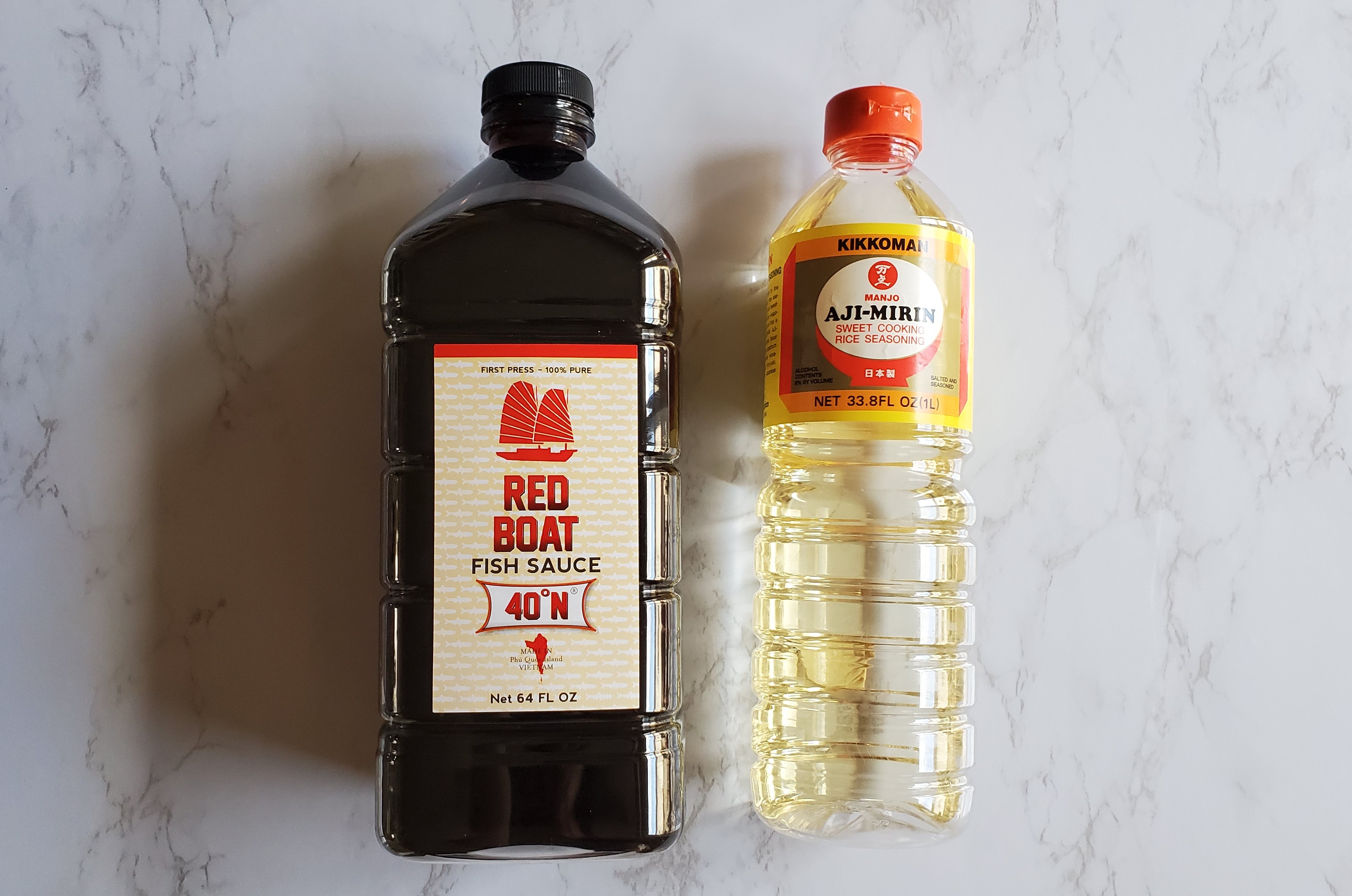
Mirin
Mirin is one of the newer ingredients to me, for home cooking anyways. I’ve probably been eating it all my life in food at restaurants, but it wasn’t until college that I discovered it. I tried one of those meal box subscriptions with a promotion and Mirin just happened to be the secret ingredient. It changed my world. This magic liquid is basically a “sweet cooking rice seasoning” or so says the bottle. It is often used as a flavor enhancer in Japanese cooking. It has a small percentage of alcohol which makes it great for cooking down in sauces like teriyaki. I also will put it in my ramen and sushi rice. It is definitely one of my favorite ingredients, hence the gargantuan bottle in my video.
Fish Sauce
I have an even more massive jug of fish sauce because, let’s be honest, fish sauce is liquid gold – and I do not think that is an over-exaggeration. I mentioned umami earlier, and if I had to tell you one ingredient to add to everything to achieve umami, I would recommend fish sauce. I will probably be that crazy friend one day who hands out little bottles of fish sauce at holiday gatherings, like some sort of drug peddler. That’s how good this stuff is. Now I will admit, if you’re sensitive, don’t go sniffing your bottle of fish sauce before adding it to your dish. My mom said, and I quote, "It smells like a cross between farts and dirty clothes". It’s not the most appetizing smell, but do no let that deter you! Stinky foods have been renowned for centuries as delicacies in many countries, so trust me on this one. Plug your nose and pour it in. That all being said, not all fish sauces deserve the acclaim. There are all sorts of fish sauces out there that add unneeded crap to their fish sauce, such as preservatives and sugars. Unnecessary. The best brand around (and if you don’t believe me, go ask Chrissy Teigen) is Red Boat. Their sauce is pure and simple, anchovies and sea salt. It’s made in Quoc Island Vietnam and also naturally gluten-free, booyah!
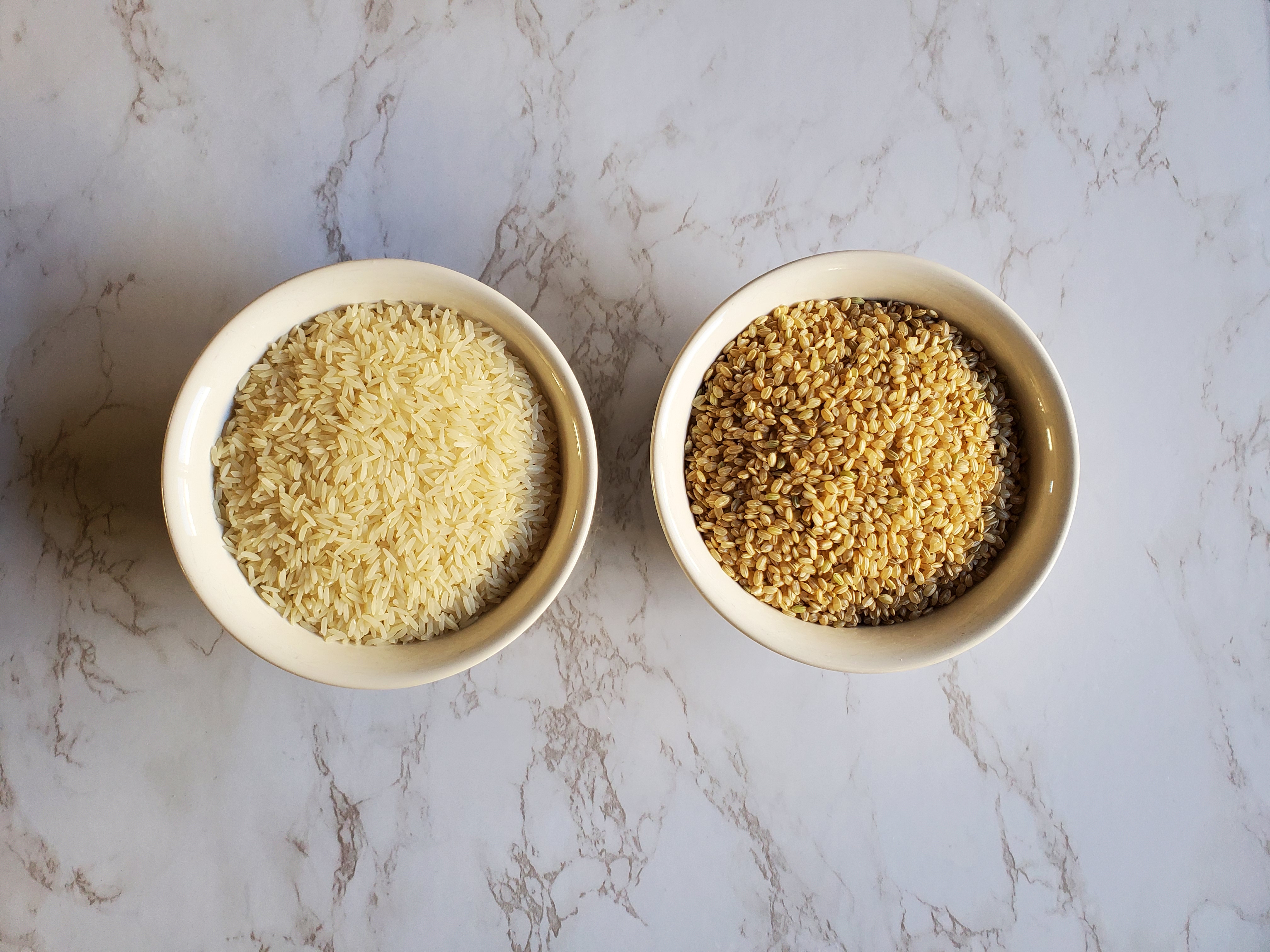
Rice
In order to have a pantry that is ready to go for an Asian meal at any time, you’re going to need rice. Rice is my comfort food. Many people (like my mother) don’t understand how different varieties of rice have diverse flavors. All I have to say to that is, if you know, you know how they taste different. That being said, my favorite go to rice with practically anything is Jasmine Rice. When cooked correctly it has the perfect bite, not too soft and not too firm. It also has an extremely pure, clear flavor. I really love the Three Sisters brand of Jasmine rice, but generally we go through so much that we buy the bulk 25 lb. Kirkland bag at Costco. Yes, I know that is intense, which is why I included a photo for reference below. The only thing I don't like about this one is that for some reason it is very dry upon being reheated, so make sure to sprinkle some water over it before microwaving (this pro tip can be used on any dry rice for that matter). I will say though, when making curries, Basmati is also great. I just don’t usually eat Basmati rice with anything else, so I rarely buy it. As far as brown rice goes, my family loves a short grain brown rice. We like short grain because it doesn’t take as long to cook as other brown rice. However, all brown rice will take about twice as long to cook as white rice. Brown rice is also "healthier" than white rice because it is a whole grain and considered a low glycemic index food. Even though white rice is my favorite, I love the nutty taste that brown rice adds to a dish. Pro tip: short grain rice is also great for making sushi.
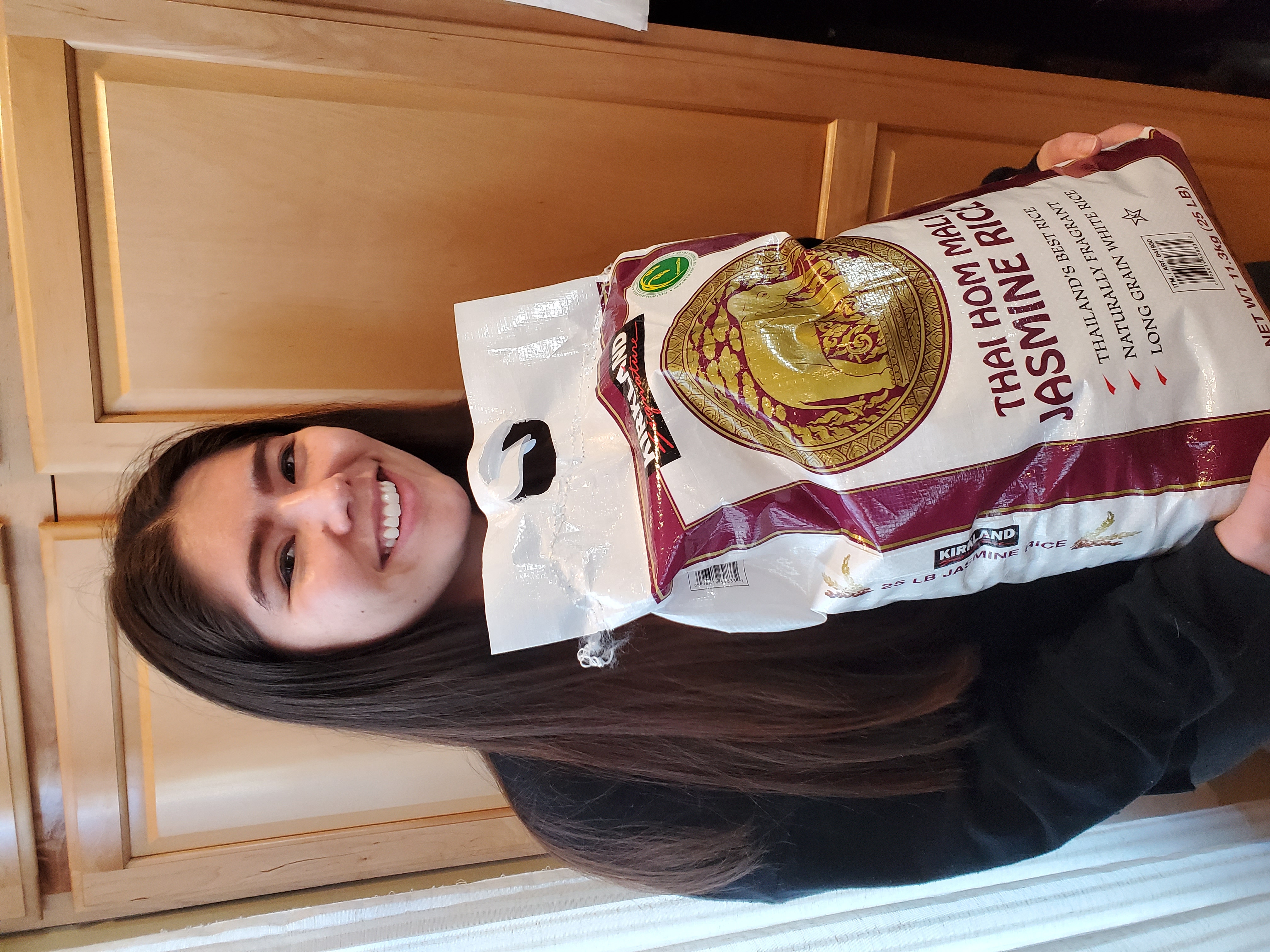
How to Cook Your Rice
There are a ton of ways to cook your rice. You can do it the old-fashioned way, in a pot on your stove top. Or if you’re like me and you eat rice most days of the week, I strongly recommend investing in a rice cooker. When I was in college, I had a little personal rice cooker that worked great. My family now has the Aroma Rice Cooker, which we’ve had for several years and it’s still trucking along. I like our rice cooker because it has a setting for both white rice and brown rice and then it also has an additional setting “steam”. However, if you’re trying to limit the number of extra appliances in your kitchen, you can totally just cook rice in your Instant Pot! And on an unrelated note, you can also use your Instant Pot for hot pot!
Hot Sauces
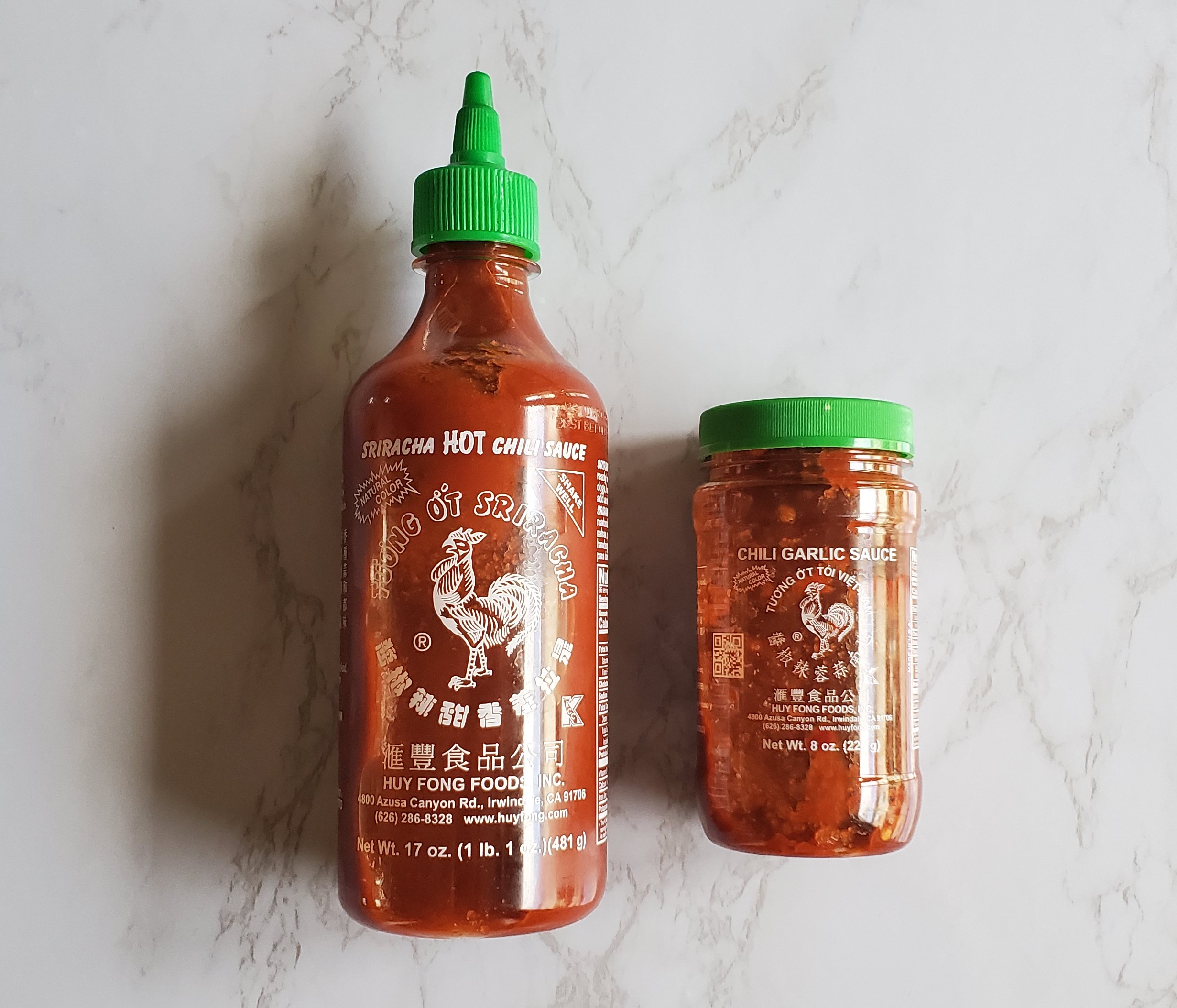
Sriracha
Yes, Sriracha is so main stream that I almost didn’t feel like mentioning it. It’s a smooth sauce made from sun ripened chiles that comes in a great squeeze bottle (I literally save these for a slew of other uses). Now unlike a most people, I do not put Sriracha on everything. I usually add it to sauces or when a dish needs just a little bit of an added kick. However, right on the bottle they recommend adding it to soups, sauces, pizza, hot dogs, hamburgers and chow mein. So, it’ll pretty much cover all of your bases.
Chili Garlic Sauce
This sauce is basically just the cool older sibling of Sriracha and pretty sacred in the Asian community. The ingredients are essentially the same as lil Srir, except for this one has nixed the sugar. It has visible chile seeds, so you know it’s gonna pack a punch. It also comes in a smaller container with a screw on cap.
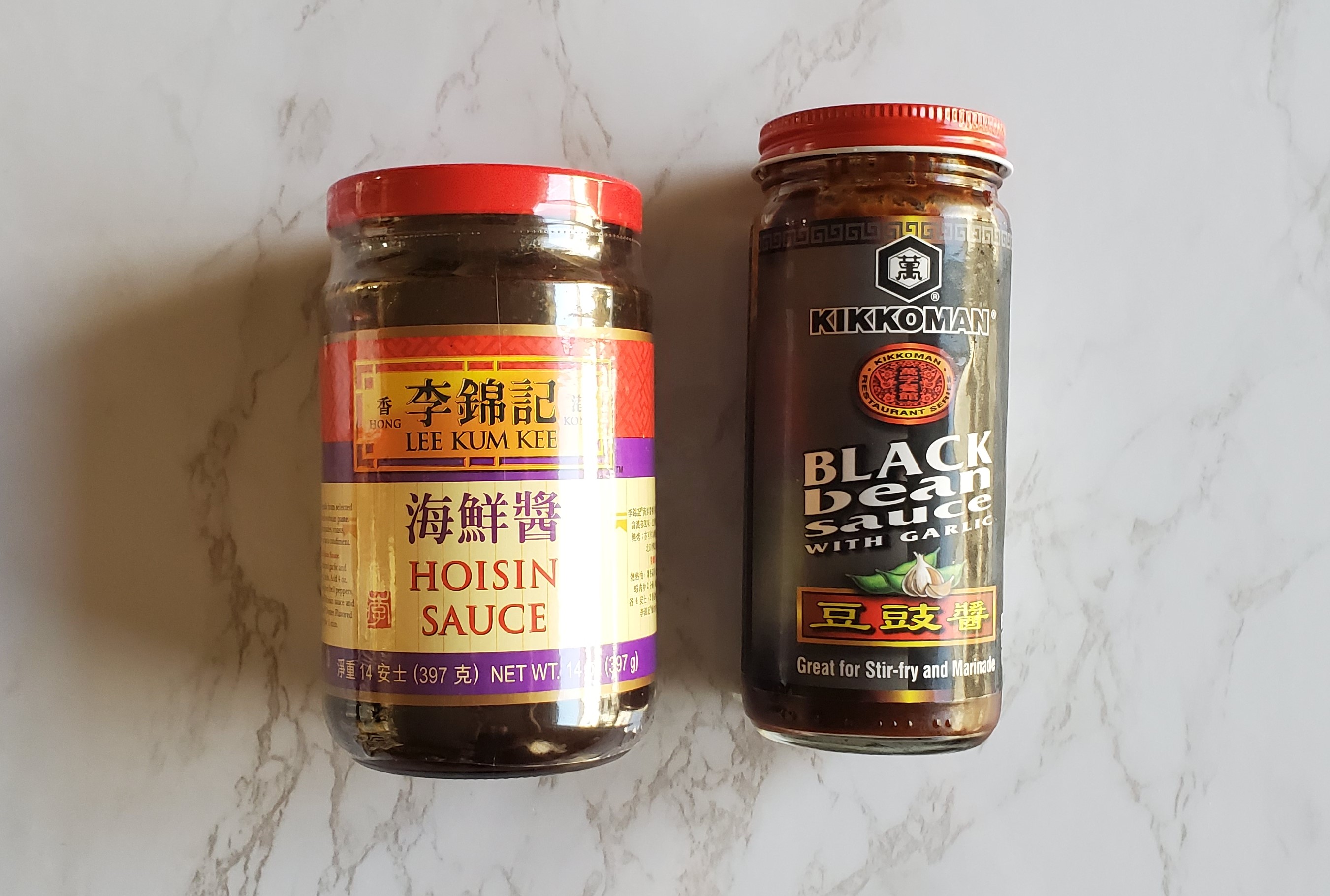
Hoisin Sauce
Hoisin is very special to me. It’s what I equate to Chinese Barbeque sauce. Hoisin is also one of the main ingredients to one of my all-time favorite foods, Char Siu, or Chinese Barbeque Pork. Hoisin is a sweet sauce with spices, dried sweet potato and fermented soybean paste. It is extremely versatile and can be used to accent marinades, roasts and stir-fry dishes. I often use it straight up as a condiment with roast duck or spring rolls.
Black Bean Sauce
I love Black Bean. You’re probably going to start thinking I’m crazy, but I truly have an emotional connection to my Asian pantry items. Probably because I have a lot of great family memories that flood my mind when I eat these foods or smell these flavors. So yes, I love, Love, LOVE Black Bean. This sauce is made with fermented soybeans, garlic and other savory ingredients. However, it tastes so much different than every aforementioned sauce that also contains soy in some form. If you don’t believe me, you’ll just have to get these products and do a side-by-side taste test. In my personal opinion, this sauce really shines when it is used with fish.
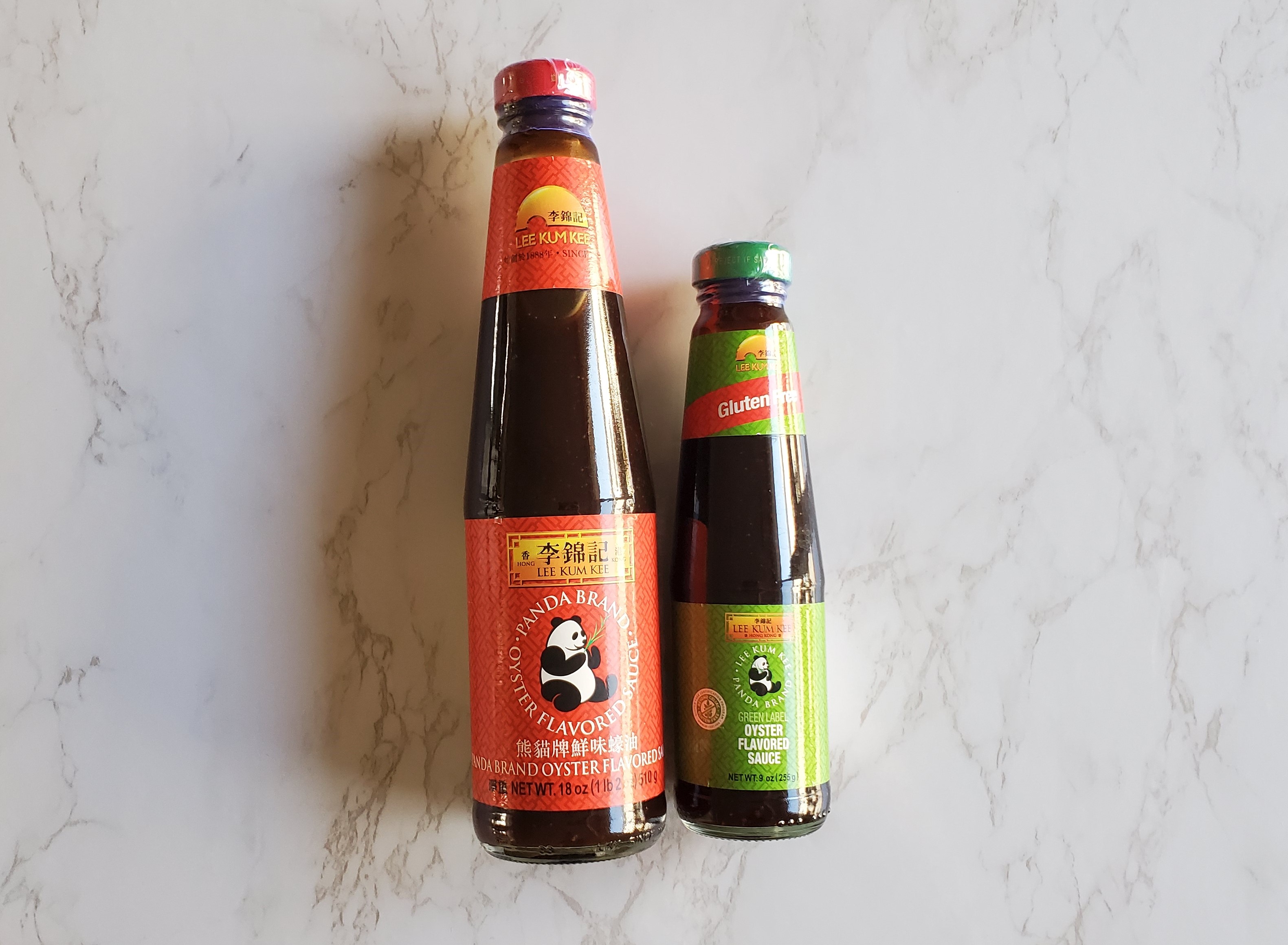
Oyster Sauce (Original & Gluten-Free)
Oyster Sauce, like fish sauce can really boost the umami in whatever dish you are making. I only ever buy the Lee Kum Kee brand and that may or may not be because there is an adorable panda eating bamboo on their label… Just kidding, it is also a great quality sauce. Lee Kum Kee has been around since 1888 so you know they’re doing something right. But even though they’ve been around for a while, they can keep up with the times. They also have a gluten-free version, which comes in a green bottle. If you haven’t noticed, all of these brands put the “healthier” versions in green packaging. So, I guess if you don’t know what you’re doing just go for the green. According to Lee Kum Kee, their sauce is great for dipping, marinating or stir-frying. I personally love putting it on my bok choy or gailan (Chinese Broccoli) with a bit of fresh ginger and garlic. It also is an incredible addition to your fried rice.

Rice Vinegar
Rice vinegar is somewhat more mild than other vinegars. You can use it as a replacement in recipes that call for things like wine, sherry, apple cider or regular distilled vinegar and vice versa. It again, is a great ingredient for making stir-fry, marinades, and especially dipping sauces and dressings. I always have it on hand because it is one of the main ingredients in the Vietnamese dipping sauce for Spring Rolls, Nuoc Cham.
Sesame Oil
Okay, this is another ingredient that I have a very specific brand preference. You must get Kadoya Sesame Oil. There are no ifs ands or buts about it. Kadoya is the best around. I’ve tried many others and have been disappointed every single time. You can usually find Kadoya in the global aisle of your local grocery store, however, it’s probably going to be a very small bottle. My pro tip, is that you go to your local Asian grocery store and buy the larger bottle which will be more bang for your buck. I go through the 22.1 fluid ounce bottle like every two months. I know, I’m kind of obsessed. In this household we used sesame oil on vegetables, in ramen, jook (Chinese rice porridge), fish, stir-fry, you name it. I would compare it to liquid gold as far as oils go.

Sweet Chili Sauce
I buy Mae Ploy’s Sweet Chili Sauce because it has no preservatives or added colors, which I think is awesome. I wish more brands would start doing it. I’m going to totally out myself and tell you that I mainly use sweet chili sauce for egg rolls, fried spring rolls, wontons and crab Rangoon. However, the brand itself recommends using it also with fish cakes, nuggets, meats and in salad dressings.
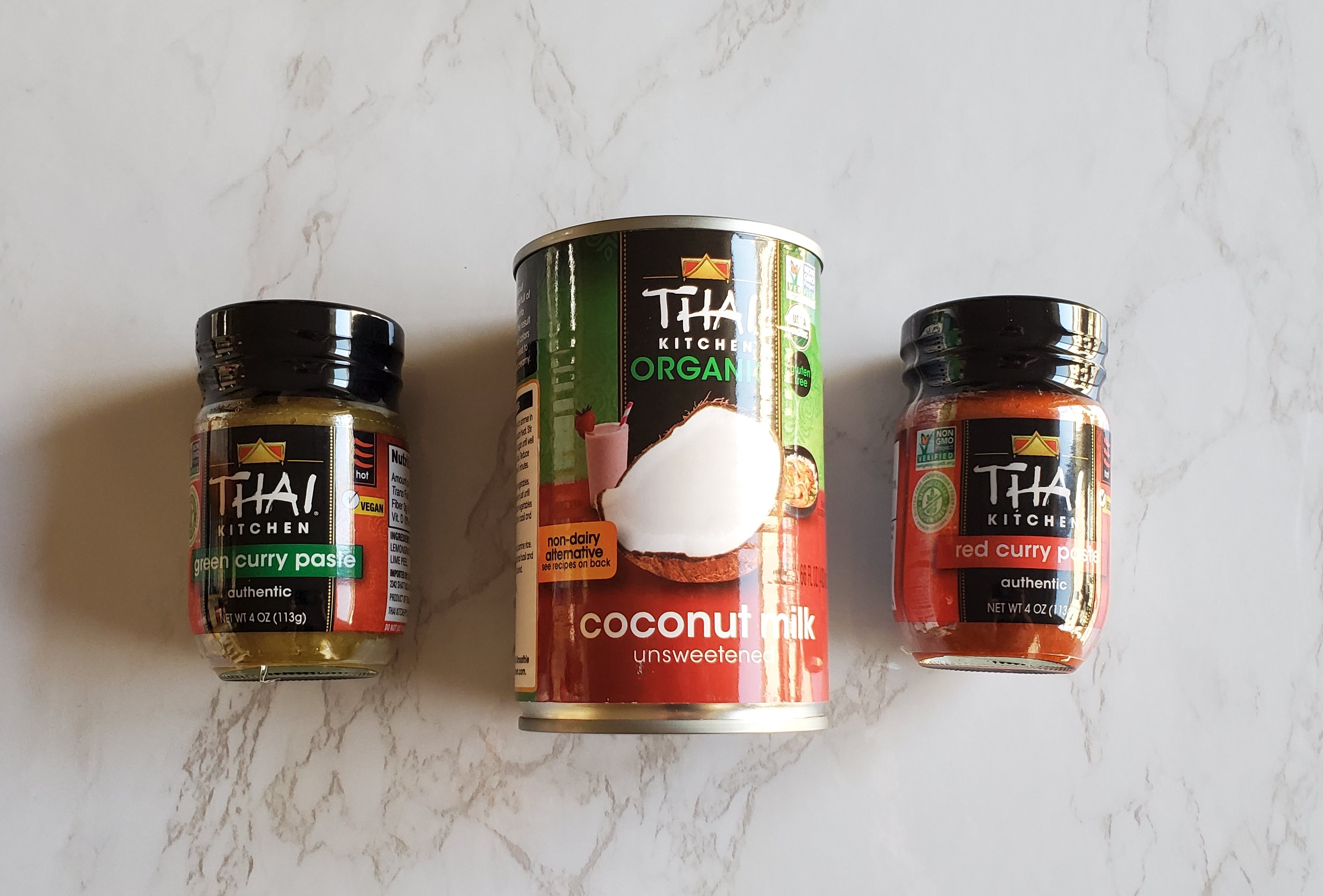
Curry Paste & Coconut Milk
I practically always have Thai Kitchen’s Red (or green) Curry Paste on hand along with a can of full-fat unsweetened coconut milk. If you have these ingredients on hand, along with fish sauce, you can make a super quick and easy meal. I generally take 1-2 tablespoons of my curry paste, with my can of coconut milk and a bit of fish sauce, add in some protein and a vegetable and simply pour it over some rice (or cauliflower rice). This meal literally got me through college. Also, the full-fat coconut milk is important, otherwise your sauce won’t be the right consistency, it will be more like soup, but you do you!
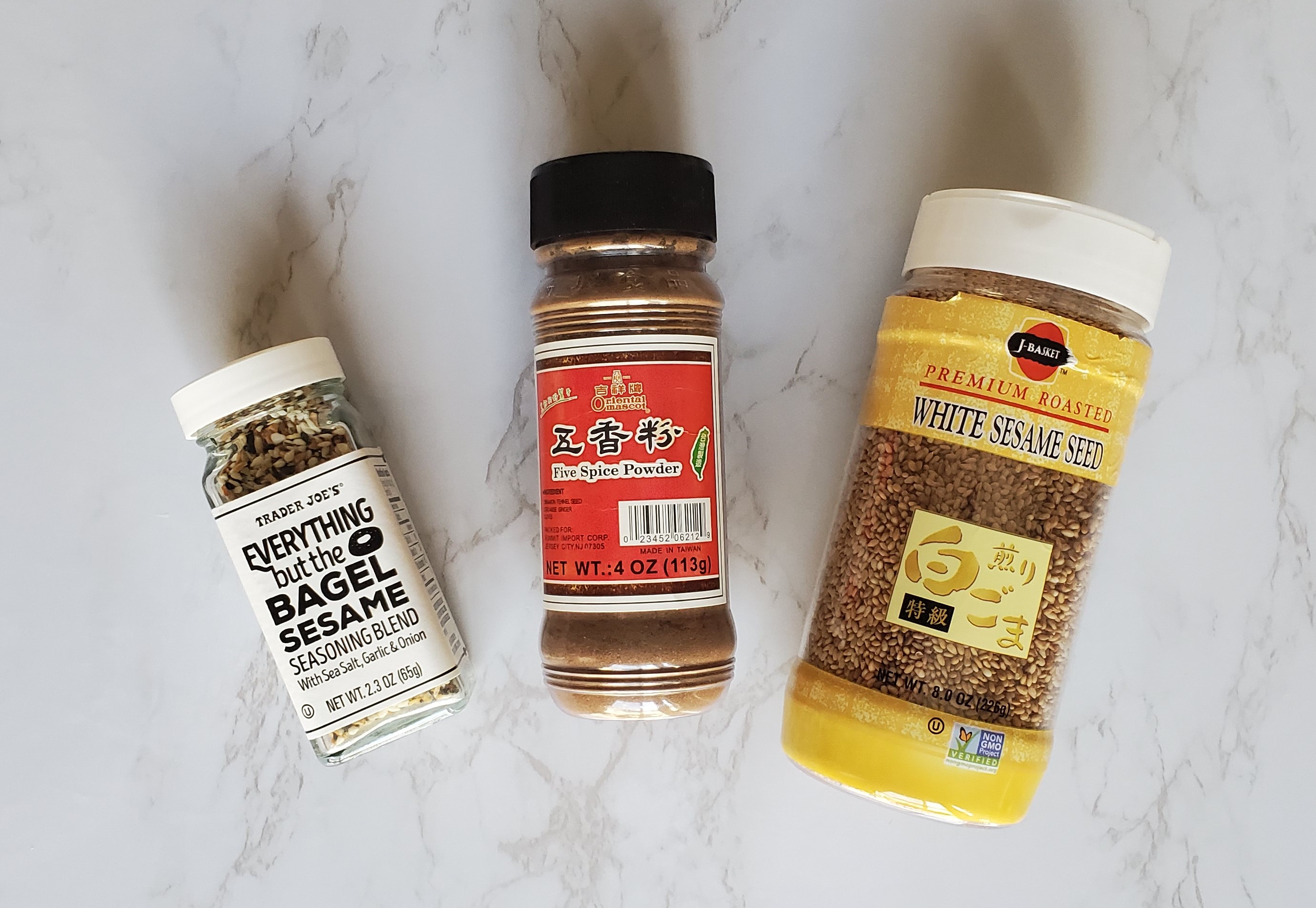
Shakeables
Everything Bagel Seasoning
I feel like by now you’ve probably heard the hype about Everything Bagel Seasoning, but if you haven’t, it’s essentially a bottle full of all those delicious spices that fall off of your bagel. This includes, but is not limited to sesame seeds, salt, dried garlic, dried onion, black sesame seeds and poppy seeds. There are many brands out there that make a version of this - Trader Joe’s, Tone’s and Olde Thompson to name a few. However, you can totally make your own at home as well. My favorite ways to use this shakeable is on avocado toast (obviously) and bibimbap bowls (Korean rice bowl).
Chinese Five Spice
I always have Five Spice on hand because it is also used in my favorite food of all time, Char Siu (Chinese BBQ pork, in case you missed it above). Not gonna lie, Five Spice smells like Pho in a bottle. If you’ve never had Pho, it is a delicious Vietnamese soup. The reason it smells reminiscent of the soup is because its ingredients are almost identical to those that are steeped in the broth for Pho. Five Spice includes ground cinnamon, fennel seed, star anise, ginger and cloves. Boom, five spices.
White Sesame Seeds (also Black Sesame Seeds)
Honestly, I often use sesame seeds for the visual aesthetic of my dishes. Because it just evokes authenticity of a dish and reminds me of being at some of my favorite restaurants. So, I shake them on top of everything, but like I said, you can also use them to make your EB seasoning. And their actually killer when added to granola.

Canned Water Chestnuts
This was another college staple for me. They’re cheap and they last FOREVER. Okay, not literally forever, check your dates, but the last a very long time. They have a similar crunch to jicama if you’ve never had them before, however they are not sweet. They are a fabulous addition to stir-fry, potstickers fried rice, and so much more.
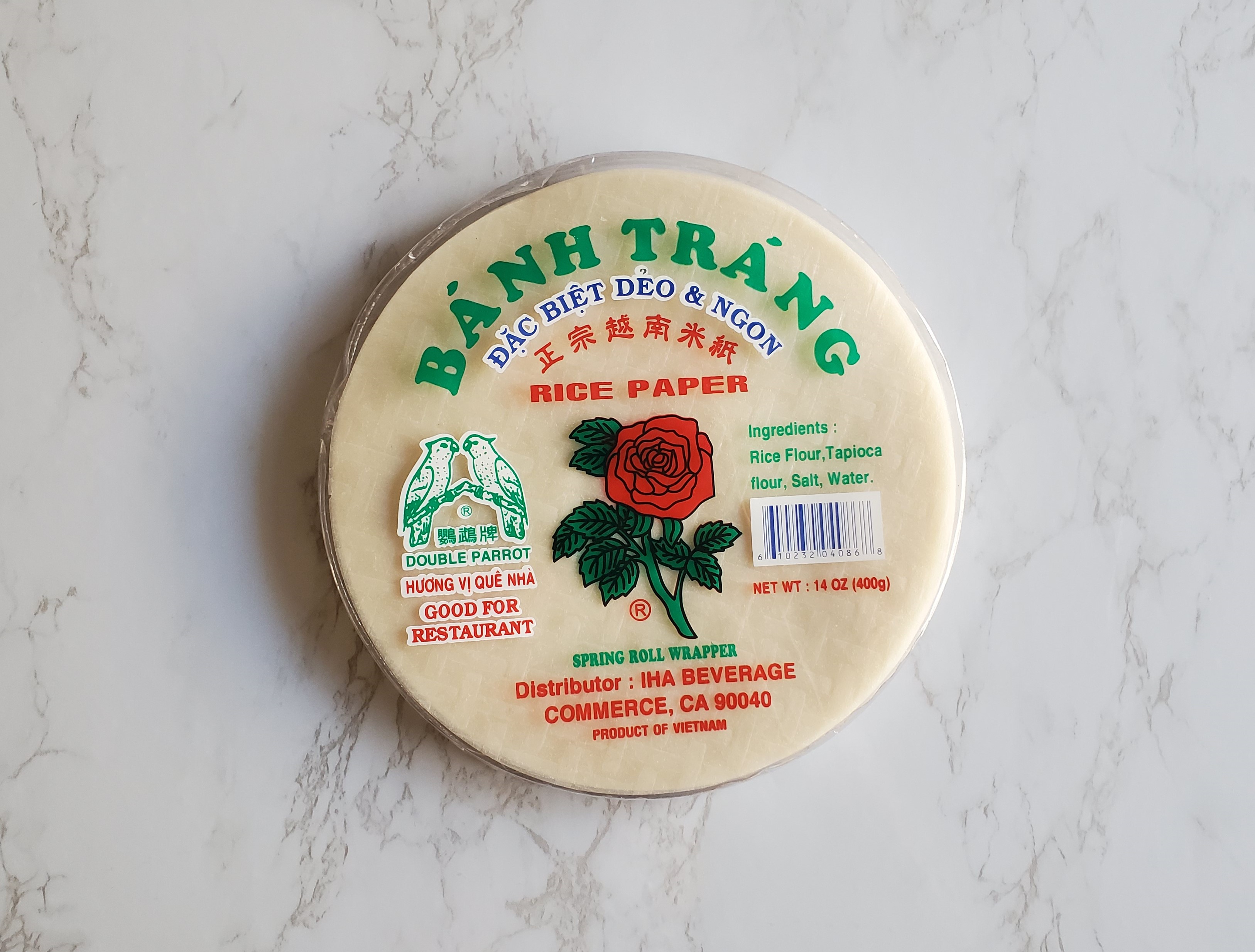
Rice Paper Wrappers
If you’re a spring roll fan, Rice Paper wrappers are a must for you. They come in a pack dry and also last forever and a day. All you have to do is dip them in water and fill with your favorite ingredients. Watch out for a spring roll tutorial coming soon!

Rice Noodles
Rice noodles are great for so many things. I like having a flat rice noodle for when I make pad thai. I also love vermicelli noodles, I left that out of my video because I didn’t have them at the time, but vermicelli noodles can go in your spring rolls, Pho and many other dishes. Many people who are gluten-free even use vermicelli noodles as a spaghetti replacement.
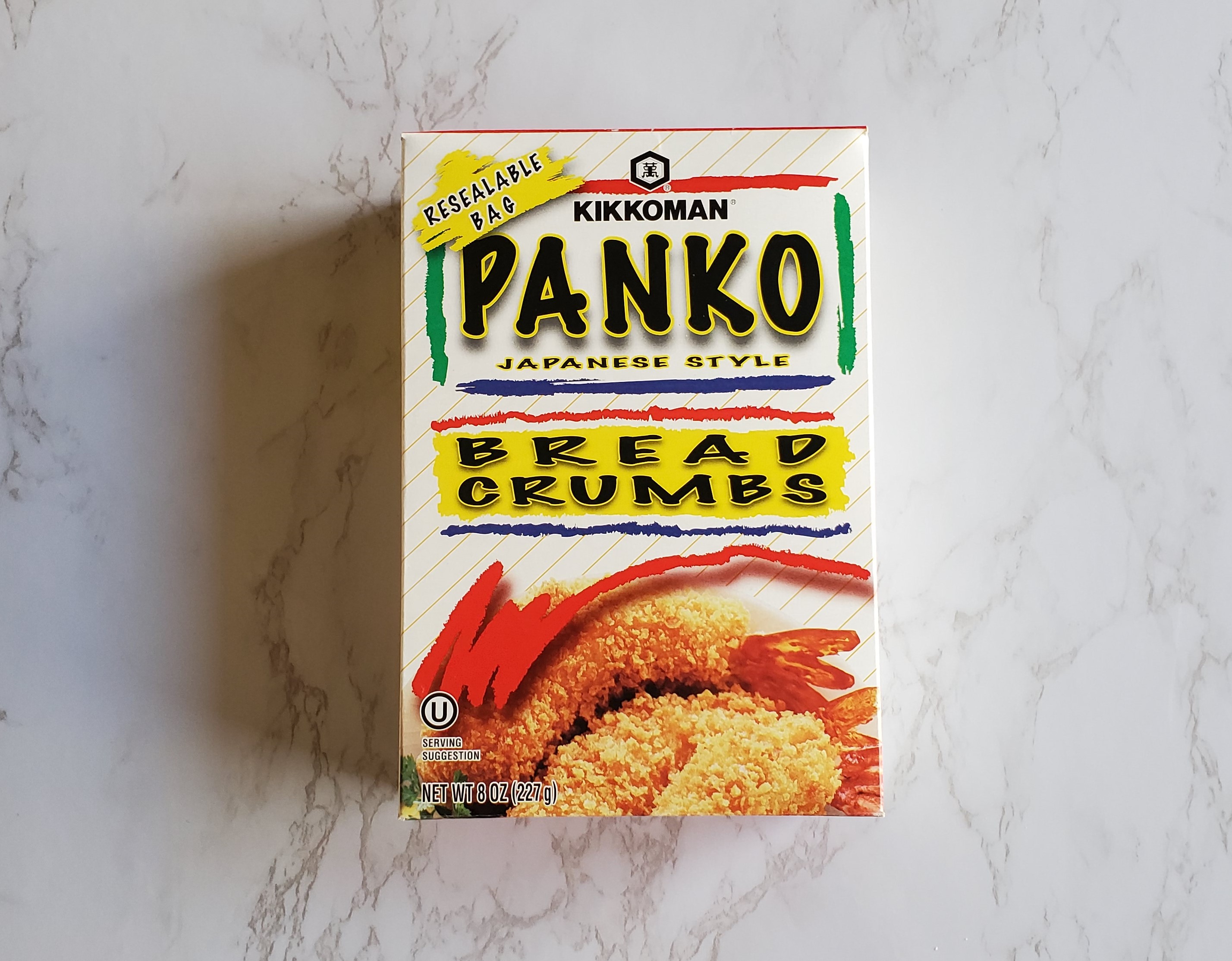
Panko Bread Crumbs
Panko is just a very cool name for a Japanese style bread crumb. But honestly, I use them in place of regular bread crumbs all the time. You can use them for pretty much everything, tempura, chicken parmesan, onion rings and my personal favorite as topping for your mac and cheese.
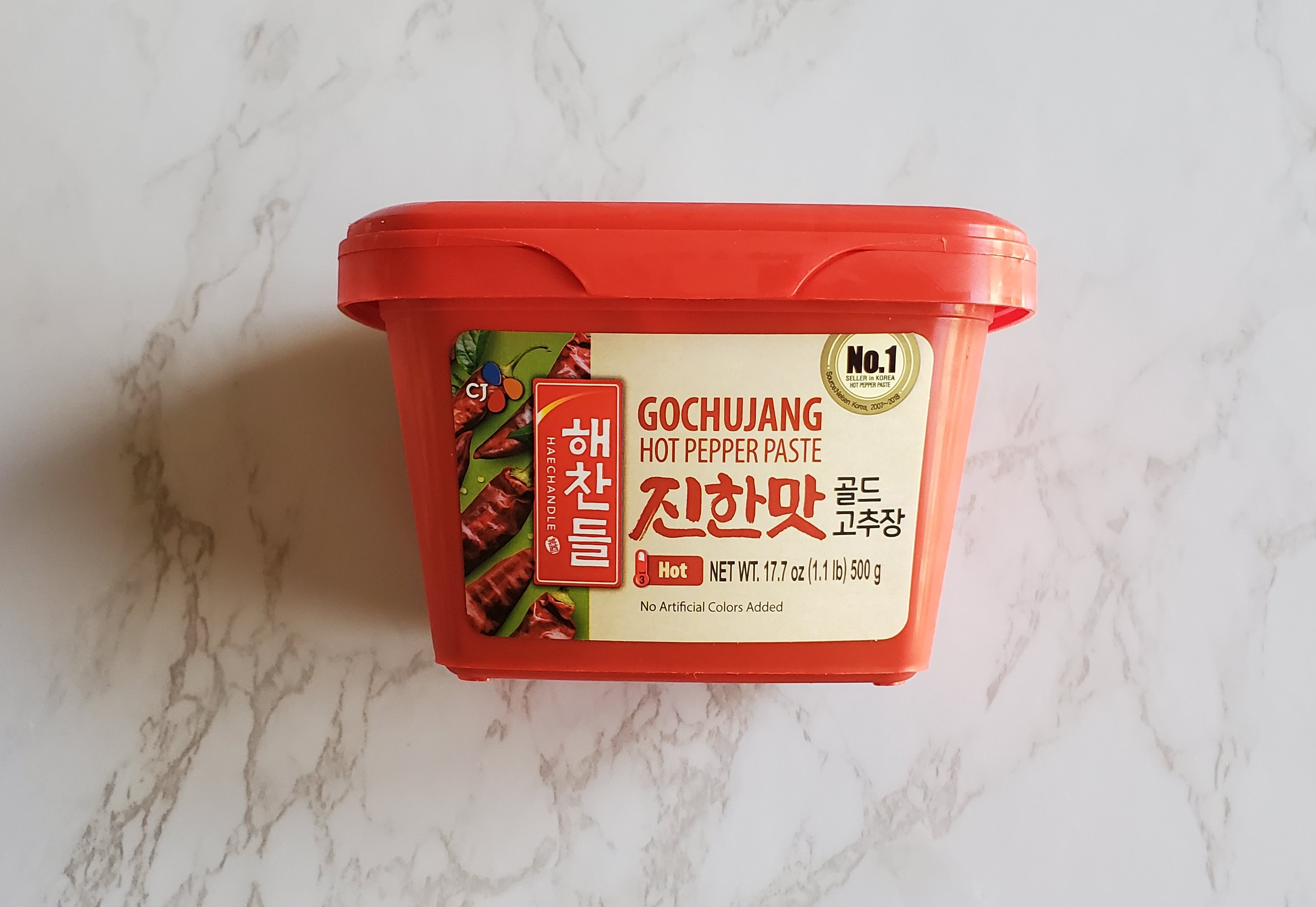
Gochujang Paste
This is a sweet and spicy Korean paste made with hot peppers and fermented soybean. I mainly use this when I am making a sauce for my bibimbap bowls. I also have mixed it into my mayo to create fancy aioli for my burgers and fries. But really, you can use it anywhere you use a hot sauce, it is just sweeter and a bit denser.
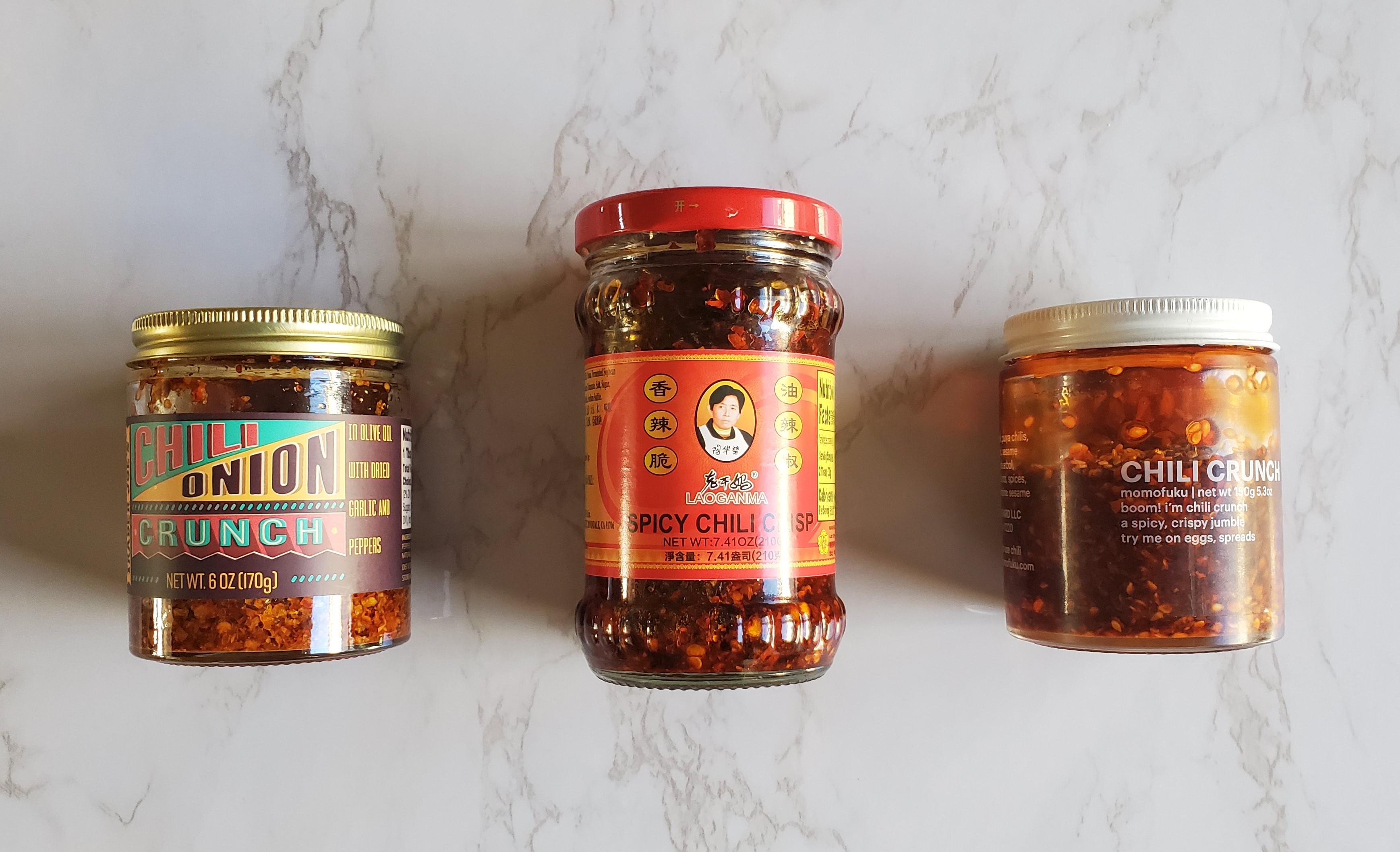
(currently missing the Mr. Bing's, but take my word for it)
Chili Crisp
I also forgot to include Chili Crisp in my video, but it has recently become one of my favorite pantry items. The original, very popular brand is Lao Gan Ma Spicy Chili Crisp. This brand is very good, but it does contain MSG, which ranks it at number four on my list. In spot number three, I put Trader Joe’s Chili Onion Crunch. I like this one, but it’s a little chewier than I prefer. In spot number two is Mr. Bing’s, it has such an interesting texture from soy nuts and a hit of sweetness from turbinado sugar (I don't currently have a jar, but I have included a direct link in my list below). My overall number one favorite right now is Momofuku’s Chili Crunch. I love that it has such pure ingredients like grapeseed oil and coconut sugar, in my opinion this brand also delivers the perfect amount of crunch, most likely due to the sesame seeds. Chili Crisps are great on eggs, rice bowls, proteins or simply just great for dipping a crispy piece of bread.
I know this is a lot to unpack but don’t be overwhelmed. Building a stocked Asian pantry takes time. The nice thing is, the majority of these items last for an extremely long time. You can also pick and choose what you need, as you need it. I realize, not everyone is as obsessed with Asian food as I am. I have also included a grocery list that you can take to the store or direct links for easy online purchasing. So get your pantry stocked, because I’ll have more Asian recipes coming your way very soon!
happy eating!
Lauren
Essential Asian Pantry Items Grocery List:
(As and Amazon associate, I earn a small percentage from qualifying purchases.)
*I also just want to mention that I am including these links for ease of use, however if you are able to, I strongly recommend supporting your local Asian Grocery store! Some of my favorites include Shanghai Market (Hopkins), United Noodle (locations in Minneapolis and Woodbury).*
Kikkoman Gluten-Free Soy Sauce
San-J Tamari / Kikkoman Tamari
Coconut Secret Coconut Aminos (Bragg Coconut Aminos is also a great choice)
Brown Short Grain Rice (you can also buy in bulk at Costco)
Aroma Rice Cooker/Instant Pot (to be completely honest, I own a knock off Instant Pot, but if I were you, I would get the original.)
Huy Fong Foods Chili Garlic Sauce
Kikkoman Hoisin / Lee Kum Kee Hoisin
Kikkoman Black Bean Sauce with Garlic (this link is for a 6 pack, but you should be able to find a single jar at your local Asian grocery store.)
Lee Kum Kee Panda Brand Oyster Sauce Original or Gluten-Free
Thai Kitchen Red Curry Paste / Thai Kitchen Green Curry Paste (or a multi-pack)
Thai Kitchen Full-fat Unsweetened Coconut Milk
Everything But The Bagel Seasoning (Trader Joe’s)
or Olde Thompson Everything Bagel Seasoning
Chinese Five Spice (Oriental Mascot)
Banh Trang Round Rice Paper Wrappers
Thai Kitchen Stir Fry Rice Noodles

Comments